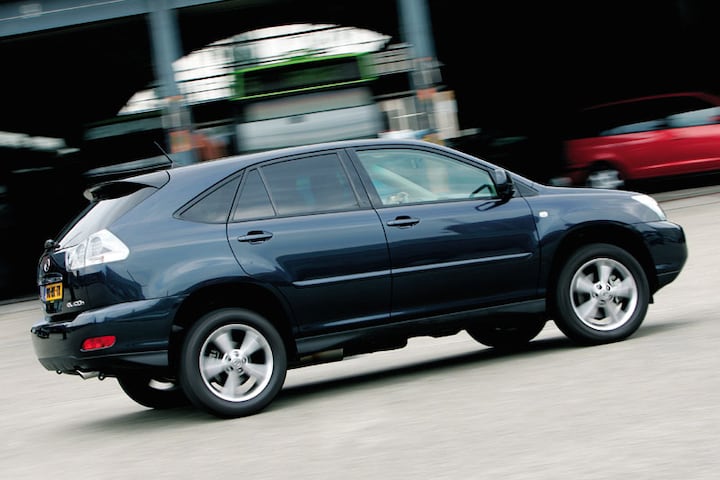First hybrid SUV, just when SUV was under fire

Lexus was the first brand to introduce a large hybrid SUV. With that, mother Toyota proudly walked ahead of the troops, just like with the Prius. The RX 400h, meanwhile, presented itself as the ideal son-in-law: tall, strong, smart and good with money.
Lexus is the car brand that invented the concept of civilization, so to speak. The design is very exuberant these days (the brand goes along with the tide of the nations), but when they introduced their brand, the Japanese only wanted to step on the toes of the esteemed competition, not those of the intended target group. As an example, we cite the first Lexus RX 300, which came on the market in 1998. A neat lad, not too tall, especially compared to the deliberately extroverted BMW X5, one of his few competitors.
RX 400h was successor RX 300
The RX 300 received an equally neat successor in 2003, which in turn received reinforcement in the form of the RX 400h, with a hybrid powertrain as a novelty. With that version, Lexus showed that it was perfectly possible to teach a still voluminous and anyway very luxurious SUV even better manners. Was that necessary? Well, it stems from an era when the SUV and off-road vehicle took a beating in the public eye and could generally do more harm than good. In particular, grumbling was heard from a group of owners who ignored the Minis intended for them, so to speak, for their shopping sessions in the city, opting instead to climb into as large a terrain bump as possible. Who doesn’t remember the nickname PC Hooft tractor? Precisely.
Ambassador SUV genre
The RX 400h could have served as an ambassador for the SUV genre in this context, because it could pride itself on the fact that it could perform like its most swaggering peers, but that the petrol only flowed from its tank by drops. Or not at all. After all, the electric motor accounted for an important part of the thrust, while the required power was simply generated by the petrol engine while driving. Eureka? Certainly on paper, but in practice that ideal image was crumpled: when driving fast for a long time, the battery could run out and consumption immediately shot up. So the son-in-law should not go too fast. Then he was ideal.
.
– Thanks for information from Autoweek.nl